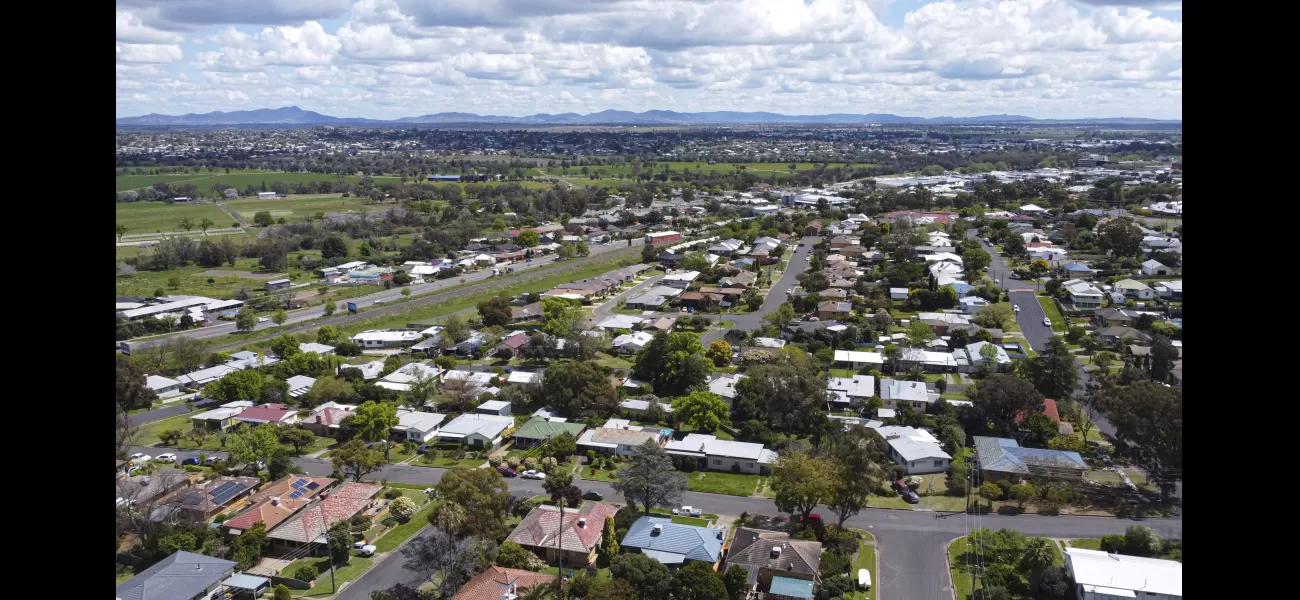Rent prices in Australia have reached an all-time high.
Australian rent prices at all-time high, forcing tenants to seek housing outside cities due to ongoing supply problems.
May 6th 2024.

Rental prices in Australia have reached an all-time high, making it increasingly difficult for tenants to afford living in major cities where supply remains an ongoing issue. According to CoreLogic's latest rental market update, the national median weekly rent has now climbed to $627, with a 0.8% increase in April alone.
The report highlights that the most significant growth has been seen in capital cities within 30-40 kilometers from the city centre. This trend is particularly evident in certain suburbs of Sydney, where the median weekly rent has reached a staggering $770, marking a 9% increase in the past year. In fact, in areas like Campbelltown on the outskirts of the city, the annual growth has gone from 9.1% to 13.4% in just six months.
A similar trend can be seen in Queensland's Jimboomba, where annual rent growth has gone from 3.8% to 6.4% in the same period. In Melbourne's Casey area, the annual house rent growth has also increased from 11.7% to 13.1%. The report suggests that this surge in rental prices could be due to renters being pushed towards more affordable and peripheral housing markets as they are priced out of central and desirable metropolitan locations.
Furthermore, the report notes that the number of temporary visa holders accounted for more than 90% of the 550,000 net overseas migrants in the year to September. This, coupled with ongoing supply constraints in the residential construction industry, with only 173,000 new dwellings completed in the same period, has contributed to the current state of the rental market.
The report suggests that the only potential relief for renters in the short term could come from a decrease in net overseas migration as some temporary migrants leave and arrival numbers return to normal post-COVID. The Centre for Population forecasts predict that this could happen from the next financial year onwards. In the meantime, renters may have to consider options such as shared accommodation or exploring more affordable rental markets in the outer metro areas or regional Australia.
The data also reveals a significant increase in regional rent growth, particularly in Queensland and Tasmania. On the other hand, areas like the Pilbara in Western Australia have seen a decline in rental prices, despite previous years of growth. In fact, rents in East Pilbara are almost 38% lower than the record high in October 2012, while West Pilbara rents are still 24.6% lower than they were in October 2011.
The report highlights that the most significant growth has been seen in capital cities within 30-40 kilometers from the city centre. This trend is particularly evident in certain suburbs of Sydney, where the median weekly rent has reached a staggering $770, marking a 9% increase in the past year. In fact, in areas like Campbelltown on the outskirts of the city, the annual growth has gone from 9.1% to 13.4% in just six months.
A similar trend can be seen in Queensland's Jimboomba, where annual rent growth has gone from 3.8% to 6.4% in the same period. In Melbourne's Casey area, the annual house rent growth has also increased from 11.7% to 13.1%. The report suggests that this surge in rental prices could be due to renters being pushed towards more affordable and peripheral housing markets as they are priced out of central and desirable metropolitan locations.
Furthermore, the report notes that the number of temporary visa holders accounted for more than 90% of the 550,000 net overseas migrants in the year to September. This, coupled with ongoing supply constraints in the residential construction industry, with only 173,000 new dwellings completed in the same period, has contributed to the current state of the rental market.
The report suggests that the only potential relief for renters in the short term could come from a decrease in net overseas migration as some temporary migrants leave and arrival numbers return to normal post-COVID. The Centre for Population forecasts predict that this could happen from the next financial year onwards. In the meantime, renters may have to consider options such as shared accommodation or exploring more affordable rental markets in the outer metro areas or regional Australia.
The data also reveals a significant increase in regional rent growth, particularly in Queensland and Tasmania. On the other hand, areas like the Pilbara in Western Australia have seen a decline in rental prices, despite previous years of growth. In fact, rents in East Pilbara are almost 38% lower than the record high in October 2012, while West Pilbara rents are still 24.6% lower than they were in October 2011.
[This article has been trending online recently and has been generated with AI. Your feed is customized.]
[Generative AI is experimental.]
0
0
Submit Comment





